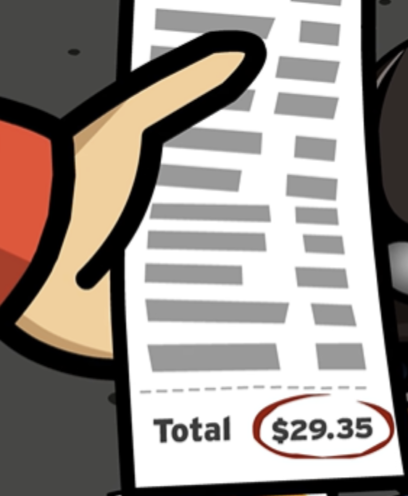Grade: 03
CCSS.ELA-Literacy.RI.3.3
Describe the relationship between a series of historical events, scientific ideas or concepts, or steps in technical procedures in a text, using language that pertains to time, sequence, and cause/effect.
Grade: 03
CCSS.ELA-Literacy.RI.3.4
Determine the meaning of general academic and domain-specific words and phrases in a text relevant to a grade 3 topic or subject area.
Grade: 03
CCSS.ELA-Literacy.RI.3.7
Use information gained from illustrations (e.g., maps, photographs) and the words in a text to demonstrate understanding of the text (e.g., where, when, why, and how key events occur).
Grade: 04
CCSS.ELA-Literacy.RI.4.3
Explain events, procedures, ideas, or concepts in a historical, scientific, or technical text, including what happened and why, based on specific information in the text.
Grade: 04
CCSS.ELA-Literacy.RI.4.4
Determine the meaning of general academic and domain-specific words or phrases in a text relevant to a grade 4 topic or subject area.
Grade: 04
CCSS.ELA-Literacy.RI.4.7
Interpret information presented visually, orally, or quantitatively (e.g., in charts, graphs, diagrams, time lines, animations, or interactive elements on Web pages) and explain how the information contributes to an understanding of the text in which it appears.
Grade: 05
CCSS.ELA-Literacy.RI.5.3
Explain the relationships or interactions between two or more individuals, events, ideas, or concepts in a historical, scientific, or technical text based on specific information in the text.
Grade: 05
CCSS.ELA-Literacy.RI.5.4
Determine the meaning of general academic and domain-specific words and phrases in a text relevant to a grade 5 topic or subject area.
Grade: 06
CCSS.ELA-Literacy.RI.6.3
Analyze in detail how a key individual, event, or idea is introduced, illustrated, and elaborated in a text (e.g., through examples or anecdotes).
Grade: 06
CCSS.ELA-Literacy.RI.6.4
Determine the meaning of words and phrases as they are used in a text, including figurative, connotative, and technical meanings.
Grade: 06
CCSS.ELA-Literacy.RI.6.7
Integrate information presented in different media or formats (e.g., visually, quantitatively) as well as in words to develop a coherent understanding of a topic or issue.
Grade: 07
CCSS.ELA-Literacy.RI.7.3
Analyze the interactions between individuals, events, and ideas in a text (e.g., how ideas influence individuals or events, or how individuals influence ideas or events).
Grade: 07
CCSS.ELA-Literacy.RI.7.4
Determine the meaning of words and phrases as they are used in a text, including figurative, connotative, and technical meanings; analyze the impact of a specific word choice on meaning and tone.
Grade: 08
CCSS.ELA-Literacy.RI.8.3
Analyze how a text makes connections among and distinctions between individuals, ideas, or events (e.g., through comparisons, analogies, or categories).
Grade: 08
CCSS.ELA-Literacy.RI.8.4
Determine the meaning of words and phrases as they are used in a text, including figurative, connotative, and technical meanings; analyze the impact of specific word choices on meaning and tone, including analogies or allusions to other texts.
Grade: 03
CCSS.ELA-Literacy.SL.3.2
Determine the main ideas and supporting details of a text read aloud or information presented in diverse media and formats, including visually, quantitatively, and orally.
Grade: 04
CCSS.ELA-Literacy.SL.4.5
Add audio recordings and visual displays to presentations when appropriate to enhance the development of main ideas or themes.
Grade: 05
CCSS.ELA-Literacy.SL.5.5
Include multimedia components (e.g., graphics, sound) and visual displays in presentations when appropriate to enhance the development of main ideas or themes.
Grade: 06
CCSS.ELA-Literacy.SL.6.2
Interpret information presented in diverse media and formats (e.g., visually, quantitatively, orally) and explain how it contributes to a topic, text, or issue under study.
Grade: 07
CCSS.ELA-Literacy.SL.7.2
Analyze the main ideas and supporting details presented in diverse media and formats (e.g., visually, quantitatively, orally) and explain how the ideas clarify a topic, text, or issue under study.
Grade: 07
CCSS.ELA-Literacy.SL.7.5
Include multimedia components and visual displays in presentations to clarify claims and findings and emphasize salient points.
Grade: 08
CCSS.ELA-Literacy.SL.8.5
Integrate multimedia and visual displays into presentations to clarify information, strengthen claims and evidence, and add interest.
Grade: 03
CCSS.ELA-Literacy.W.3.6
With guidance and support from adults, use technology to produce and publish writing (using keyboarding skills) as well as to interact and collaborate with others.
Grade: 04
CCSS.ELA-Literacy.W.4.9b
Apply grade 4 Reading standards to informational texts (e.g., “Explain how an author uses reasons and evidence to support particular points in a text”).
Grade: 05
CCSS.ELA-Literacy.W.5.9b
Apply grade 5 Reading standards to informational texts (e.g., “Explain how an author uses reasons and evidence to support particular points in a text, identifying which reasons and evidence support which point[s]”).
Grade: 06
CCSS.ELA-Literacy.W.6.9b
Apply grade 6 Reading standards to literary nonfiction (e.g., “Trace and evaluate the argument and specific claims in a text, distinguishing claims that are supported by reasons and evidence from claims that are not”).
Grade: 07
CCSS.ELA-Literacy.W.7.9b
Apply grade 7 Reading standards to literary nonfiction (e.g. “Trace and evaluate the argument and specific claims in a text, assessing whether the reasoning is sound and the evidence is relevant and sufficient to support the claims”).
Grade: 04
CCSS.Math.Content.4.MD.A.2
Use the four operations to solve word problems involving distances, intervals of time, liquid volumes, masses of objects, and money, including problems involving simple fractions or decimals, and problems that require expressing measurements given in a larger unit in terms of a smaller unit. Represent measurement quantities using diagrams such as number line diagrams that feature a measurement scale.
Grade: 04
CCSS.Math.Content.4.NF.C.7
Compare two decimals to hundredths by reasoning about their size. Recognize that comparisons are valid only when the two decimals refer to the same whole. Record the results of comparisons with the symbols >, =, or <, and justify the conclusions, e.g., by using a visual model.
Grade: 05
CCSS.Math.Content.5.NBT.B.7
Add, subtract, multiply, and divide decimals to hundredths, using concrete models or drawings and strategies based on place value, properties of operations, and/or the relationship between addition and subtraction; relate the strategy to a written method and explain the reasoning used.
Grade: 06
CCSS.Math.Content.6.NS.B.3
Fluently add, subtract, multiply, and divide multi-digit decimals using the standard algorithm for each operation.












